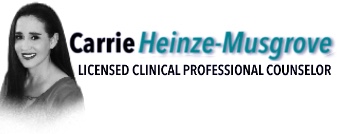“Doors are opening. The wait wasn’t punishment. It was preparation.” Why do we believe that bad things happen to us … Continue reading »
PTSD Screening Test
Disclaimer
This screening is intended solely to help identify the symptoms of grief. It’s intended to educate and not designed to provide a clinical diagnosis. An accurate diagnosis for disorders related to grief can only be made by a physician or qualified mental health professional after a complete evaluation, including a physical exam, to rule out any other medical illnesses or conditions that may account for symptoms. Your use of this website constitutes your agreement to the provisions of this disclaimer.
What is Post-Traumatic Stress Disorder (PTSD)?
When in danger, it’s natural to feel afraid. This fear triggers many split-second changes in the body to prepare to defend against the danger or to avoid it. This “fight-or-flight” response is a healthy reaction meant to protect a person from harm. But in post-traumatic stress disorder (PTSD), this reaction is changed or damaged.
People who have PTSD may feel stressed or frightened even when they’re no longer in danger. PTSD develops after a terrifying ordeal that involved physical harm or the threat of physical harm. The person who develops PTSD may have been the one who was harmed, the harm may have happened to a loved one, or the person may have witnessed a harmful event that happened to loved ones or strangers.
PTSD was first brought to public attention in relation to war veterans, but it can result from a variety of traumatic incidents, such as mugging, rape, torture, being kidnapped or held captive, child abuse, car accidents, train wrecks, plane crashes, bombings, or natural disasters such as floods or earthquakes.
Signs and Symptoms
PTSD symptoms can be grouped into three categories:
1. Re-experiencing symptoms. Re-experiencing symptoms may cause problems in a person’s everyday routine. They can start from the person’s own thoughts and feelings. Words, objects, or situations that are reminders of the event can also trigger re-experiencing. Flashbacks—reliving the trauma over and over, including physical symptoms like a racing heart or sweating, bad dreams or frightening thoughts.
2. Avoidance symptoms. Things that remind a person of the traumatic event can trigger avoidance symptoms. These symptoms may cause a person to change his or her personal routine. For example, after a bad car accident, a person who usually drives may avoid driving or riding in a car. Other symptoms include: Staying away from places, events, or objects that are reminders of the experience Feeling emotionally numb Feeling strong guilt, depression, or worry Losing interest in activities that were enjoyable in the past Having trouble remembering the dangerous event.
3. Hyperarousal symptoms. Hyperarousal symptoms are usually constant, instead of being triggered by things that remind one of the traumatic event. They can make the person feel stressed and angry. These symptoms may make it hard to do daily tasks, such as sleeping, eating, or concentrating. Other symptoms may include: Being easily startled Feeling tense or “on edge” Having difficulty sleeping, and/or having angry outbursts. It’s natural to have some of these symptoms after a dangerous event. Sometimes people have very serious symptoms that go away after a few weeks. This is called acute stress disorder, or ASD. When the symptoms last more than a few weeks and become an ongoing problem, they might be PTSD. Some people with PTSD don’t show any symptoms for weeks or months.





